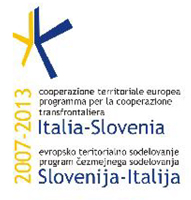Expected Results
The main achievements of the project will be: a) to create a high level of cooperation within the partnership b) to develop an adequate system sustainable in the border region in terms of water protection and to prevent hazards to the environment, both natural and anthropogenic, c) promote the implementation of joint infrastructure (prevention of environmental risks), d) promote research and development and innovation of the partnership network, and) optimize the integration of the various stakeholders in the field of water (two companies of public management urban water authorities, administrative, research and population), f) promote the use of renewable energy sources (use of groundwater for heating and cooling of buildings); g) to promote a permanent partnership that will continue the activities regarding water management in relation to the prevention of natural and man-made, as well as their exploitation for energy purposes.
Expected results of the project are: a) cross-border integrated common data base (hydrology and water quality), b) monitoring system joint cross-border integrated and innovative c) guidelines for improvement of the quality and quantity of transboundary waters and groundwater; d) guidelines for use of groundwater for energy e) guidelines for the reuse of treated wastewater and sewage sludge; f) action plan for the re-naturalization of some critical parts of the Horn River; g) guidelines for a common system of integrated management of transboundary waters, sharing of best practices in similar environmental contexts.
target groups the project are: a) the common cross-border and cross-border services firms, ie end users, b) legislators, responsible for water management and planning, c) scientific institutions working in these areas, d) population that benefits from the cross-border area. |
